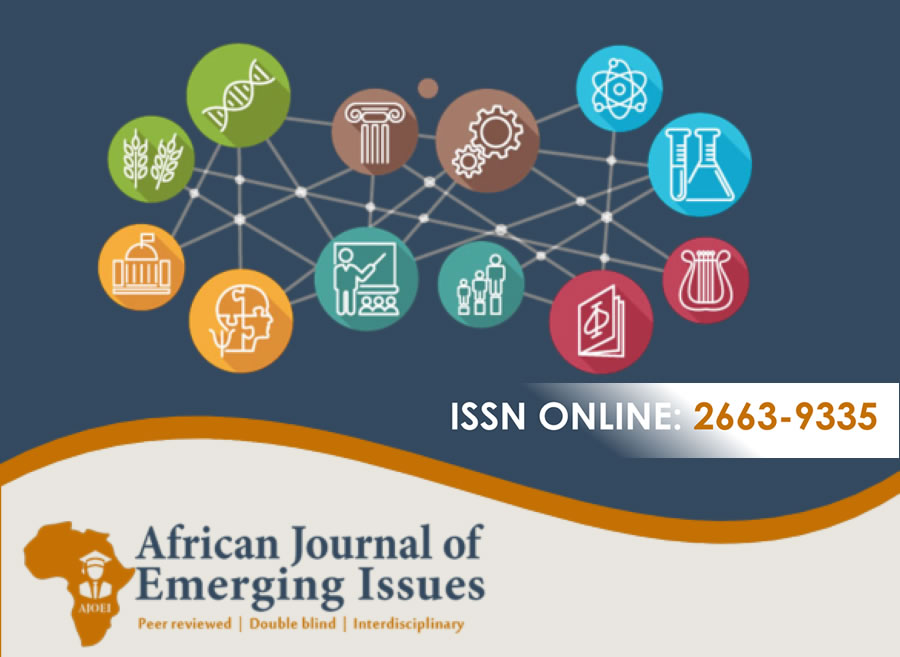STRATEGIC ANALYSIS AND SUSTAINABILITY OF INSURANCE COMPANIES IN RWANDA
Abstract
Purpose: This study examined the effect of strategic analysis on the sustainability of insurance companies in Rwanda, recognizing that sound strategic analysis is crucial for organizational survival and growth.
Statement of the Problem: This study examined the role of strategic analysis in enhancing the sustainability of Rwandan insurance companies amid challenges like client dissatisfaction, slow growth, and underperformance, with some firms failing while others rely on mergers and acquisitions to sustain operations.
Methods: The study employed a descriptive survey design and positivist philosophy, targeting 14 insurance companies and 252 managers through census sampling and structured questionnaires. Data validity and reliability were ensured through pilot testing, with analysis conducted using descriptive and inferential statistics in SPSS version 21.
Results: The findings revealed a statistically significant relationship between strategic analysis and sustainability of insurance companies in Rwanda (β = 1.495, p < 0.05). The study established that strategic analysis explained 89.3% of the variation in the sustainability of insurance firms, indicating its critical role in long-term business success. However, most insurance companies relied solely on management for strategic analysis, with limited involvement of employees, which may hinder effective strategy implementation.
Conclusion: The study concludes that strategic analysis significantly influences the sustainability of insurance companies in Rwanda, with tools such as SWOT, PESTEL, and Gap Analysis playing a crucial role in assessing both internal and external business environments. However, despite its significance, limited employee participation in strategic analysis remains a challenge that could impact long-term sustainability.
Recommendations: To enhance sustainability, the study recommends that insurance companies actively involve employees in the strategic analysis phase to foster ownership and commitment to the developed strategies. Additionally, firms should strengthen their strategic management frameworks by integrating comprehensive market analysis tools to navigate the dynamic business environment effectively.
Keywords: Strategic Analysis, Sustainability, Insurance Companies, Rwanda
References
Aguoru, C.N., Orsaah, A., S., & Umogbi, M. (2018). Effect of Strategic Analysis and Strategy Implementation on Service Quality of a Popular Telecommunication Company in Nigeria. International Journal of Scientific Research and Management, 6(04), EM-2018-305-311.
Bhasi, H. (2018). What are Dynamic Capabilities and their role in Strategy? Retrieved from https://www.marketing91.com/dynamic-capabilities/
BNR (2016). Financial stability report. Kigali: BNR.
Bulińska-Stangrecka, H. & Bagieńska, A. (2020). Intangible resources for an organization’s sustainability potential. Entrepreneurship and Sustainability Issues, 8(1), 741-761.
Campbell, J. M. & Park, J. (2017). Extending the resource-based view: Effects of strategic orientation toward community on small business performance. Journal of Retailing and Consumer Services, 34(C): 302-308.
Černevičiūtė, J. & Strazdas, R. (2018). Teamwork management in Creative industries: factors influencing productivity. Entrepreneurship and Sustainability 6(2): 503-516.
Corporate Finance Institute (CFI) (2021). Strategic Analysis. Retrieved from https://corporatefinanceinstitute.com/resources/knowledge/strategy/strategic-analysis/
George, B., Walker, R.M., & Monster, J. (2019). Does Strategic Planning Improve Organizational Performance? A Meta-Analysis. Public Administration Review, 79(6), 810-819.
George, D. & Mallery, P. (2003).SPPS for Windows step by step: A simple guide and reference. (4thed.). Boston: Allyn and Bacon.
Hanna, K.T. (2021). Gap Analysis. Retrieved from https://www.techtarget.com/searchcio/definition/gap-analysis
Kurniawan, K.I.A. & Waisarayutt, C. (2019). SWOT analysis for determining sustainability development strategy of The Local Enablers community, a social business ecosystem at Universitas Padjadjaran, Jatinangor, Indonesia. Walailak Procedia, 2019(1): IC4IR.148.
Messineo, R.J. (2020). Strategic Analysis: What It Is & How To Do It Effectively. ClearPointStrategy.com, https://www.clearpointstrategy.com/blog/strategic-analysis
Munck, L. & Tomiotto, M.F. (2019). Sustainability in organizational context: Reflections on the meanings attributed to the decision-making practice and its strategic implications at Itaipu. Revista de Gestao, 26(1), 22-38.
Njoroge, E. (2018). Effects of Strategic Planning on Organizational Performance: A Case of Event Planning Firms in Nairobi CBD. MBA Thesis: United States International University – Africa.
Saunders, M., Lewis, P. & Thornhill, A. (2008). Research methods for business students (fifth edition). Prentice Hall, Financial Times.
Sibomana, J.B., Ndikubwimana, J.B., Dukunde, A., & Nalubegwa, C. (2020). The Contribution of Life Insurance Companies to the Gross Domestic Product in Rwanda. A Case of SORAS-VIE LTD (2010 – 2017). East African Journal of Science and Technology, 11 (1), 110–120.
Smart Insights (2021). The ultimate guide to strategic analysis. Retrieved from https://www.smartinsights.com/marketplace-analysis/swot-analysis/ultimate-guide-to-strategic-analysis/
Surbhi, S. (2017). Difference between Census and Sampling. Retrieved from https://keydifferences.com/difference-between-census-and-sampling.html
Teece, D. J. (2007). Explicating dynamic capabilities: the nature and micro-foundations of (sustainable) enterprise performance. Strategic Management Journal, 28(13), 1319–1350.
Teece, D. J., Pisano, G., & Shuen, A. (1997). Dynamic capabilities and strategic management. Strategic Management Journal, 18(7), 509–533.
Uwanyiligira, J. (2021). Strategic Management Practices and Service Delivery in Public Institutions in Rwanda: A Case of National Land Centre. International Journal of Scientific and Research Publications, 11(1), 119-138.





